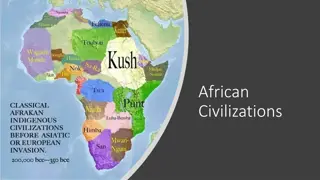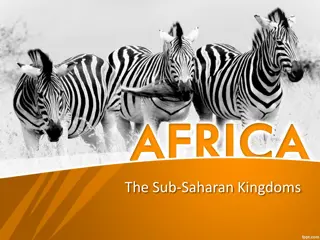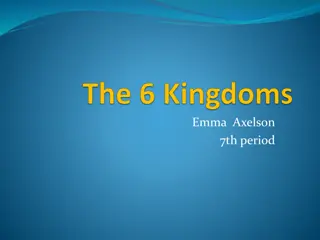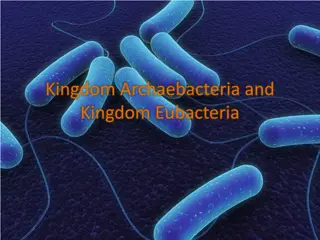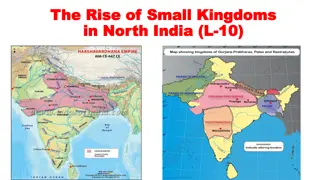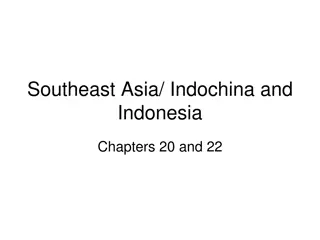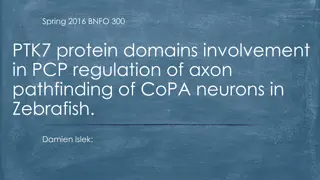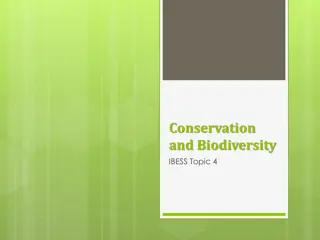Exploring the Diversity of Life: A Journey through Different Domains and Kingdoms
Delve into the fascinating world of biological diversity, from the three domains of Bacteria, Archaea, and Eukaryota to the various kingdoms within Eukaryotas like Protists and Fungi. Discover the unique characteristics and habitats of each type of organism, highlighting the importance of understanding the complexity of life on Earth.
Download Presentation

Please find below an Image/Link to download the presentation.
The content on the website is provided AS IS for your information and personal use only. It may not be sold, licensed, or shared on other websites without obtaining consent from the author. Download presentation by click this link. If you encounter any issues during the download, it is possible that the publisher has removed the file from their server.
E N D
Presentation Transcript
Domains There are many different sizes of taxa The biggest taxon is domain There are 3 domains: 1. Bacteria 2. Archaea 3. Eukaryota http://upload.wikimedia.org/wikipedia/commons/thumb/a/a5/Biological_classification_L_Pengo_vflip.svg/150px-Biological_classification_L_Pengo_vflip.svg.png These are the biological taxa, with the biggest at the top
Bacteria Bacteria are single-celled (each organism is only one cell) They don t have organelles Some bacteria cause human diseases, but others help us Bacteria can live in many places, including inside animals, like you! http://upload.wikimedia.org/wikipedia/commons/2/27/E.-coli-growth.gif This animation shows bacteria making copies of themselves
Archaea Archaea are like bacteria in that they are single-celled and don t have organelles They can live in extreme places where, until recently, it was thought life cannot exist Archaea can live in hot springs, underwater volcanoes, and sewage treatment plants A lot is still being learned about Archaea Champagne vent white smokers.jpg http://upload.wikimedia.org/wikipedia/commons/thumb/b/b0/Rio_tinto_river_CarolStoker_NASA_Ames_Research_Center.jpg/200px-Rio_tinto_river_CarolStoker_NASA_Ames_Research_Center.jpg A new group of archaea was recently discovered in poisonous water from mines Archaea can live in hydrothermal vents, which are parts of an underwater volcano
Eukaryota Eukaryota cells have organelles and are bigger and more complex than bacteria or archaea Eukaryota are the only group that can have more than one cell in one organism (multicellular), although some eukaryota are single-celled Which domain are humans in? http://upload.wikimedia.org/wikipedia/commons/thumb/7/7d/Eukaryota_diversity_2.jpg/220px-Eukaryota_diversity_2.jpg
Protists: 1 of Eukaryotas 4 Kingdoms All protists are very small Some protists are like plants and make food from sunlight, while others are more like animals and get their food from other living things
Fungi : 1 of Eukaryotas 4 Kingdoms Multicellular, except yeast Fungi digest food outside their body and then absorb it Besides Protists and Fungi, the other 2 Kingdoms are Plants and Animals
Species Species is the smallest commonly used unit of biological classification There are about 1.7 million known species of organisms New species are still being found About 70% of all known species are Arthropods, which is a phylum (a smaller group) within the animal kingdom 9
Arthropods File:Arthropoda.jpg An arthropod is an animal with no backbone but with an hard shell on the outside Insects, spiders, shrimp, crabs, and scorpions are arthropods
Known Species of Organisms Protists



